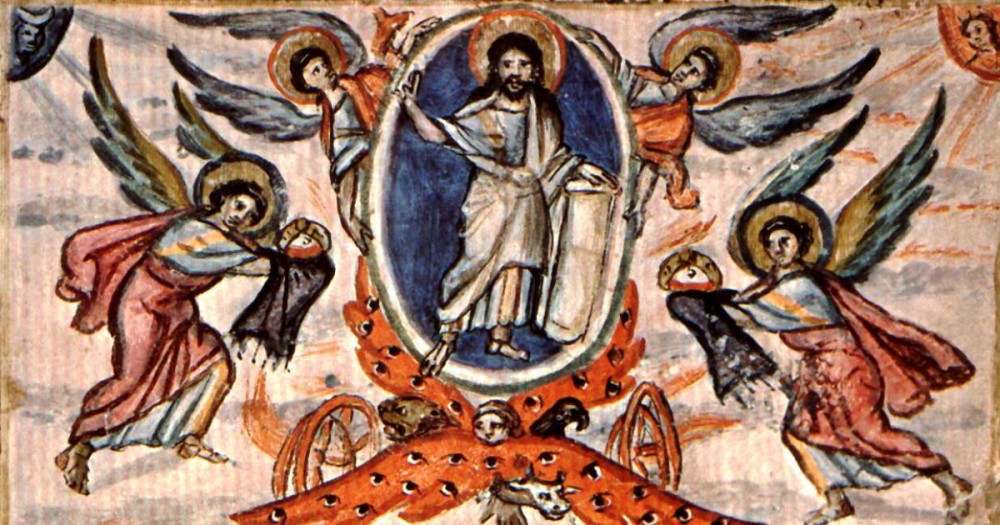The ascension story can inspire us to be more fully part of the world
This is not a unblemished body rising to heaven. This is Jesus in the flesh, God carrying embodiedness through to the end.

I’ve been listening to a podcast about the Heaven’s Gate cult, thinking how very strange and warped the group members’ beliefs were—they thought aliens from the Hale-Bopp comet were going to pick them up. Then I started looking at the story of the ascension: “While Jesus was blessing them, he withdrew from them and was carried up into heaven.” The version in Acts, I think, has an even more dramatic flair: “When [Jesus] had said this, as they were watching, he was lifted up, and a cloud took him out of their sight.”
The ascension isn’t exactly UFOs. But it’s not too far off. If we’re honest, it’s a weird story. I mean, sure, Jesus performs miracles throughout the Gospels, but they’re mostly functional: some water into wine to keep the party going; multiplying loaves and fishes to feed the crowd; healing people’s bodies and spirits. This miracle . . . well, this is just showing off.
Honestly, it is an awkward story. It feels a little bit like talking about UFOs. The members of Heaven’s Gate were, in some way, trying to accomplish what Jesus accomplished in the ascension. People ascending to be with God in another, heavenly realm.




